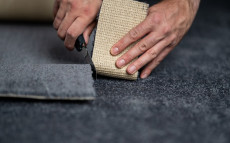- pathfindersAI
- Job Profile
Upholsterers
Summary
Job Description: Upholsterers
What They Do
Upholsterers play an instrumental role in the furniture manufacturing and refurbishing industries. Essentially, they are the artisans behind the comfortable and aesthetically pleasing surfaces we encounter in both residential and commercial settings. Upholsterers transform ordinary frames into functional pieces through a meticulous process that includes padding, springs, webbing, and fabric or leather coverings. These professionals craft new furniture pieces but also restore, repair, and reupholster existing items, giving them a renewed lifespan and aesthetic appeal. Their work is vital in settings ranging from homes to hotels, theatres, and even the automotive industry.
Job Responsibilities
The responsibilities of an upholsterer are multifaceted, encompassing a broad spectrum of tasks that ensure the durability and visual appeal of upholstered products. First, an upholsterer must take accurate measurements of the furniture frame and estimate the materials needed for the project. The next step involves cutting and sewing fabric or leather to fit these specifications. Attaching padding and fabric to the furniture frames using tools like tacks, staples, and glue is a meticulously executed process requiring a keen eye for detail. Additionally, upholsterers often need to repair or replace springs and webbing, ensuring that the furniture is both sturdy and comfortable. More experienced upholsterers may also be responsible for creating custom designs and working directly with clients to bring their unique visions to life.
Essential Skills
To excel as an upholsterer, a blend of technical skills and soft skills is necessary. Manual dexterity and an eye for detail are fundamental, given the precision required in cutting, sewing, and attaching materials. Proficiency in using various tools, including staple guns, sewing machines, and cutters, is also crucial. Creativity and artistic sensibility aid in selecting materials and designing custom pieces that align with clients' desires. In addition, good communication skills are essential for engaging with clients and understanding their needs. Problem-solving abilities come into play when assessing damaged pieces and determining the best course of action for repair or restoration. Lastly, physical stamina and strength are necessary as the job often involves lifting heavy materials and working in various positions for extended periods.
Educational Pathways
While becoming an upholsterer does not necessarily require a formal degree, various educational pathways can significantly enhance one's skills and employment prospects. Many upholsterers learn the trade through on-the-job training or apprenticeships, where they gain hands-on experience under the supervision of seasoned professionals. However, vocational schools and community colleges offer specialized programs in upholstery, furniture design, and related fields. These programs typically cover essential techniques, fabric identification, color theory, and the use of industrial tools and machinery. Moreover, some may offer certifications that can bolster one's resume. Continuous learning through workshops and advanced courses can further refine an upholsterer's craft, keeping them updated with industry trends and new technologies.
Career Prospects
The career prospects for upholsterers are varied and promising. Given the ubiquitous need for upholstered furniture in homes, offices, and public spaces, skilled upholsterers remain in steady demand. Entry-level positions often start in small upholstery shops, furniture manufacturing companies, or repair services. With experience, upholsterers might specialize in particular types of upholstery (e.g., automotive, marine, or antique furniture) or progress to supervisory roles. Entrepreneurial upholsterers may also start their own businesses, offering custom services and building a loyal clientele. As sustainability becomes a growing concern, the demand for refurbishing and reupholstering old furniture is likely to rise, providing additional opportunities for skilled practitioners.
Conclusion
Upholsterers are the unsung heroes behind the comfort and beauty of the furniture and interiors we often take for granted. Their job is a harmonious blend of craftsmanship, creativity, and technical know-how, demanding a unique set of skills. While the path to becoming an upholsterer is versatile, involving both hands-on learning and specialized education, the career promises a stable and fulfilling future. In an era that increasingly values sustainability and craftsmanship, the role of the upholsterer is not only necessary but also highly esteemed, ensuring that this age-old craft continues to thrive in modern times.
Video
Compensation
| State | Median Salary | Median Hourly | Positions |
|---|---|---|---|
| AL | 34,720 | 16.69 | 220 |
| AZ | 42,730 | 20.54 | 400 |
| AR | 37,860 | 18.20 | 170 |
| CA | 46,180 | 22.20 | 2,540 |
| CO | 46,520 | 22.37 | 160 |
| CT | 43,730 | 21.02 | 310 |
| DE | 43,260 | 20.80 | 30 |
| FL | 37,530 | 18.04 | 1,200 |
| GA | 38,540 | 18.53 | 770 |
| HI | 42,680 | 20.52 | 70 |
| ID | 37,950 | 18.25 | 180 |
| IL | 37,700 | 18.12 | 430 |
| IN | 45,480 | 21.86 | 1,820 |
| IA | 41,960 | 20.17 | 30 |
| KS | 52,560 | 25.27 | 300 |
| LA | 36,400 | 17.50 | 40 |
| ME | 47,680 | 22.92 | 30 |
| MD | 41,140 | 19.78 | 60 |
| MA | 44,630 | 21.46 | 330 |
| MI | 42,410 | 20.39 | 1,220 |
| MN | 47,270 | 22.73 | 120 |
| MS | 41,300 | 19.86 | 2,980 |
| MO | 39,410 | 18.95 | 350 |
| NE | 44,670 | 21.48 | 40 |
| NV | 38,930 | 18.72 | 370 |
| NJ | 44,900 | 21.59 | 310 |
| NY | 48,550 | 23.34 | 480 |
| NC | 48,470 | 23.30 | 4,830 |
| OH | 40,630 | 19.53 | 720 |
| OK | 37,600 | 18.08 | 120 |
| OR | 39,550 | 19.01 | 420 |
| PA | 37,930 | 18.24 | 740 |
| SC | 41,790 | 20.09 | 140 |
| TN | 34,190 | 16.44 | 420 |
| TX | 37,150 | 17.86 | 1,550 |
| UT | 40,590 | 19.51 | 110 |
| VT | 45,760 | 22.00 | 100 |
| VA | 37,320 | 17.94 | 650 |
| WA | 54,080 | 26.00 | 290 |
| WI | 43,740 | 21.03 | 240 |
Similar Occupations
In this area you will find other occupations that are close to the one you were viewing in tasks, knowledge and work environment. If the primary job profile you are viewing isn't quite to your liking, take a look around and see what else is available.
Basic and Premium Accounts have more alternative occupations available than the Free account.

Cabinetmakers and Bench Carpenters - 51-7011.00
Cabinetmakers and bench carpenters specialize in constructing and repairing wooden cabinets, furniture, and fixtures, often working from detailed blueprints and specifications. They use a range of hand tools and machinery to cut, shape, and assemble wood products to precise measurements and high-quality standards.
-
$43,260/yr
Median Pay -
88,460
Number of Jobs

Carpet Installers - 47-2041.00
A carpet installer measures and prepares floor spaces, cuts carpeting to fit dimensions, and secures it using adhesives, staples, or tacks. They also ensure the carpet is properly stretched and fitted to avoid wrinkles and bubbles for a smooth, professional finish.
-
$47,520/yr
Median Pay -
15,560
Number of Jobs